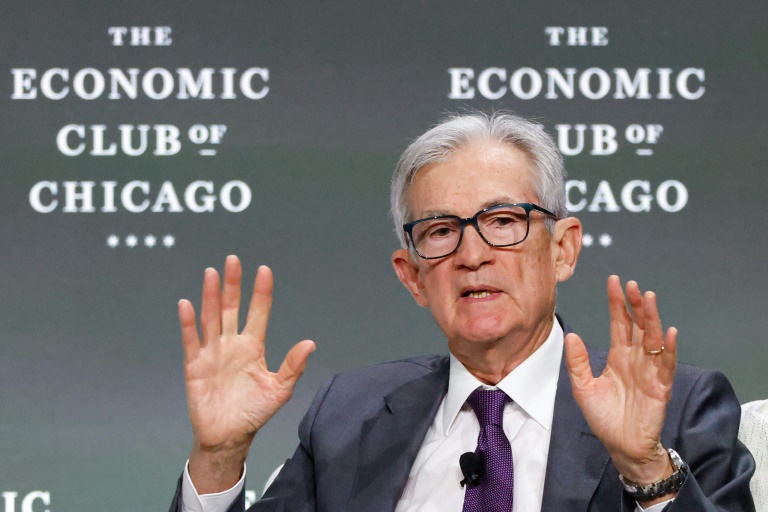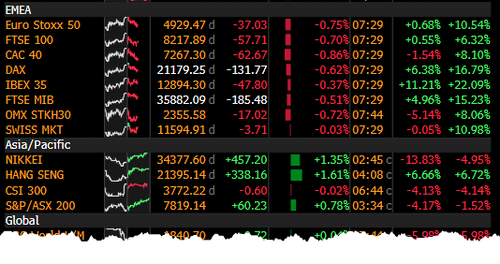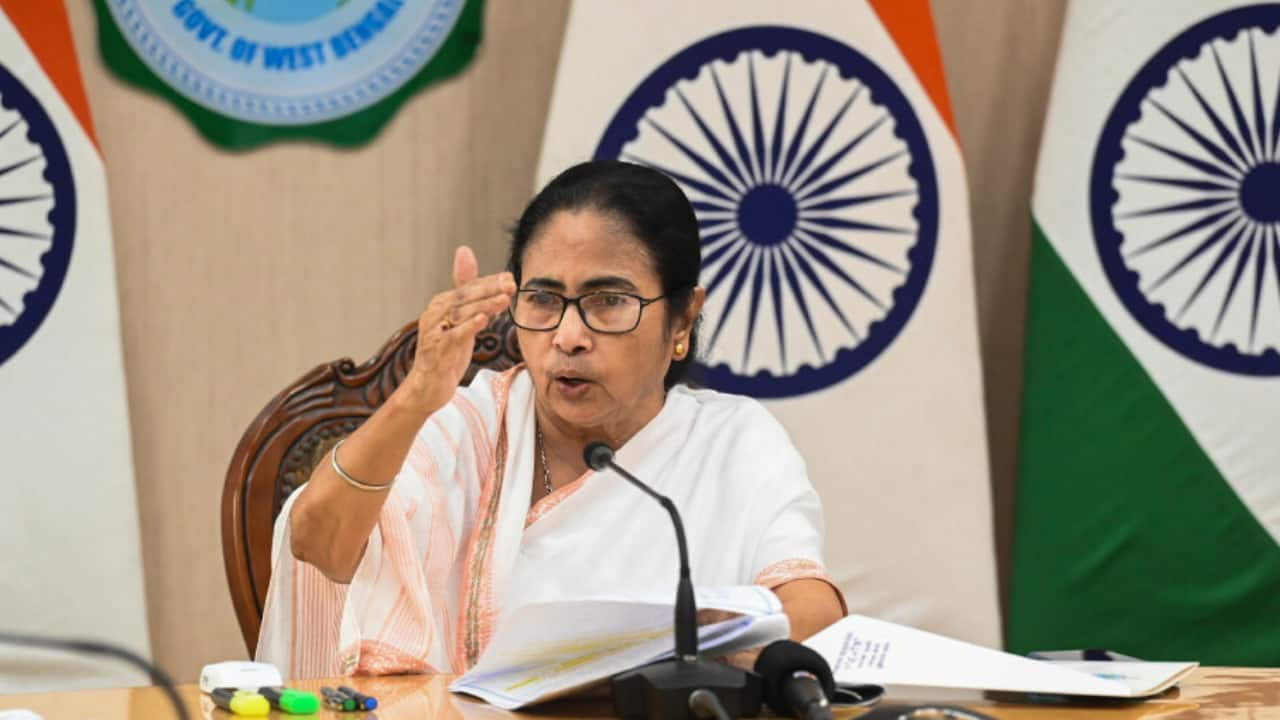The world is grappling with the US’s tariff tantrums, which risk escalating into a full-blown global trade war. Export-focused sectors are in the direct line of fire, and the global economic slowdown will not spare anyone. Still, sectors catering to domestic consumption will remain relatively insulated.
Specifically, companies catering to mass demand had lagged behind in the post-pandemic K-shaped recovery, and are now available at attractive valuations. They hold particular relevance as their fortunes are reversing with a recovery in rural demand. One of these turnaround sectors is value retail, and the stock in focus is .

After reporting another quarter of healthy numbers earlier this month in its quarterly business update for the recently concluded March quarter, the stock appreciated 7% in April, even as the broad market index corrected by almost 6%. Troubles have persisted since the pandemic V-Mart is a value retailer with a pan-India presence. Sporting almost 500 stores across a sprawling 4 million square feet, the business is driven by value apparel.
With persistent store expansion and an established track record of scaling up in its core territories, V-Mart has all the ingredients for a successful retail business. But the pandemic hit it hard. Several stores remained closed during lockdowns.
Even after lockdowns were lifted and pent-up demand was released, rural demand remained sluggish in an environment of uncertainty and rising inflation. Amid this K-shaped recovery, companies catering to mass demand such as V-Mart, lagged behind. Its troubles were exacerbated by intensifying competition from organized, unorganized as well as digital players in apparel retail.
To make matters worse, V-Mart undertook bold acquisitions – Unlimited in FY22 and Limeroad in FY23, which have been weighing on its books. But the tables are turning. The Unlimited turnaround V-Mart had acquired the fashion retail brand, Unlimited from Arvind Fashions in 2021.
With the objective of expanding its footprint into the South, 74 stores, warehouses, and inventory were acquired at book value of 150 crore. While the deal was attractive and made V-Mart a pan-India apparel retailer, it came with its share of challenges. Compared to V-Mart which had only about 23% of its stores in tier-1, Unlimited had 45% of its presence in top-tier cities.
Unlimited stores have since been rebranded and brought into the V-Mart way of doing business. Several Unlimited stores have been closed and replaced with higher throughput stores in tier-3 and tier-4 cities. Average selling price (ASP), which stood at more than 500 at the time of the acquisition, has since been brought down to 430.
It is still double the ASP of V-Mart, but the ASPs are more comparable in apparel with V-Mart at 340 and Unlimited at 460. So, at Unlimited, net store addition has been limited, store-space stagnant at 0.8 million sq.
ft., and revenues had been growing slowly. But this conservative approach of profitable ramp-up has paid off.
Unlimited posted 10% SSSG growth in Q4 FY25 - higher than V-Mart’s 7%. Sales per square foot at Unlimited grew by 12% year-on-year, keeping pace with the overall growth of 13%. Unlimited is expected to continue to drive growth at V-Mart here onwards.
SSSG stands for same sales store growth. Limeroad losses are shrinking V-Mart had acquired Limeroad in FY23 to further its digital dreams. But have been a consistent drag on the business.
To turn it around, the management has halved advertising expenses from 38% to 19% of net merchandise value (NMV) in the year ended December 2024. Meanwhile, NMV has been supported at a quarterly value of around 29 crore by increasing the sales of V-Mart via Limeroad. V-Mart’s contribution to Limeroad’s orders has tripled to 33% during the period.
This has paid off. Limeroad Ebitda loss has halved to 6.5 crore in Q3 FY25 from 14.
1 crore in the year-ago period. Debt had exploded but is stabilizing V-Mart undertook heavy capex for acquisitions and store-expansion, amounting to 900 crore over three years. It was partly funded by debt, leading to an explosion of term debt on V-Mart’s books from 11 crore in FY19 to more than 1,200 crore in FY24.
Notwithstanding industry headwinds, V-Mart’s operating profits have been growing. But rising interest costs and depreciation in the face of heavy capex, have led to low and even negative bottomline for the company. However, the company has shifted focus to profitable growth.
It has been closing down underperforming stores and improving the throughput of existing stores. The management has been offering discounts and fresher inventory, while also undertaking category expansion to capture a larger wallet share. This, along with the turnaround in Unlimited and shrinking losses at Limeroad, is expected to drive growth without adding to the debt burden, thereby gradually improving the business’ debt metrics.
Working capital troubles are alleviating Apart from term debt, thanks to piling inventory, V-Mart had also been accumulating working capital loans on its books. Some working capital pain is expected from the inherently high inventory in apparel retailing. But with the rise of fast fashion, the industry is pivoting towards quicker refresh and replenishment of inventory.
V-Mart is no exception, and has reduced its inventory from 129 days of sales in FY23 to 92 days as of December 2024. This is also expected to alleviate its working capital stress. Fortunes are turning Inflation has mellowed, primarily driven by food inflation which constitutes a significant portion of the rural consumption basket.
Rural incomes have picked up following healthy monsoons and agricultural output. Government sops amid election, have helped as well. This has led to a , and consequently, in the fortunes of V-Mart.
As of December 2024, the number of stores and store space grew by 7% year-on-year, and the management has guided for 60-65 new stores in FY26. Footfall improved by 42% to 56 million in the nine months ended December 2024 (9MFY25). Despite moderation in conversion rate, same-store sales growth (SSSG) was 10%, and sales per sq.
ft. expanded by 13%—led from the front by 19% growth in tier-4 cities. In 9MFY25, Unlimited saw its Ebitda margin double to 14.
4% while Limeroad losses continued to shrink. The persistent focus on profitability resulted in overall Ebitda margin expanding from 11.1% to 13.
5%. The momentum continued in Q4, which saw annual revenues clocking 17% year-on-year growth to 3,254 crore. This was led by V-Mart and Unlimited, which registered 18% growth during the period on the back of 11% SSSG and 12% store expansion.
Valuation offers comfort Even as risks from competition persist, the turning fortunes and attractive valuations have captured investor attention. After correcting more than 33% from its peak in October 2024, the stock is trading at a modest 21 times its FY27 Ebitda. This bakes in a rather unassuming revenue growth of 15% between FY25 and FY27 at 6.
4% Ebitda margin. Reflecting this optimism, the stock has recovered 7% this month. Brokerages have pegged its target price at around 3,500 per share, reflecting 12% upside from current levels.
.
Business

V-Mart Retail's bold acquisitions hurt, but the tables are turning now

In the wake of pandemic struggles, V-Mart Retail is on a recovery path, driven by strategic initiatives and a resurgence in rural demand. Even as risks from competition persist, the turning fortunes and attractive valuations have captured investor attention















